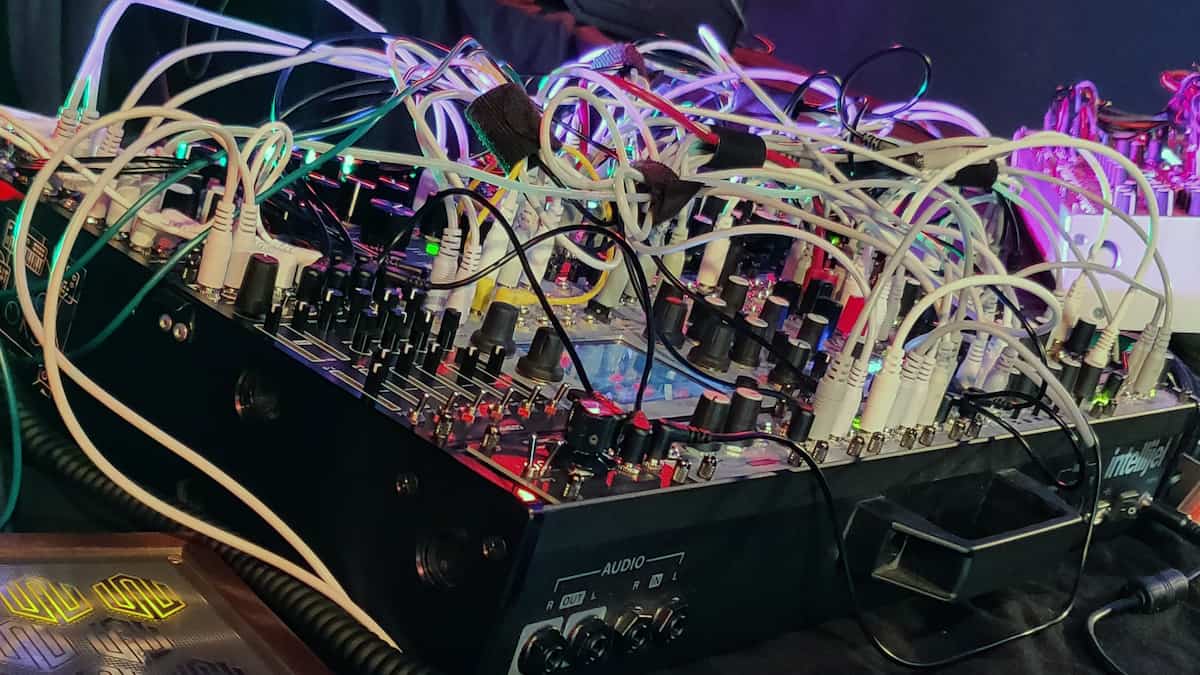Books
What Synth Players Need to Know about Signal Flow

Kim Bjørn, the author of PUSH TURN MOVE, takes a look at this important guidance of synth-users when exploring an instrument, and getting familiar with how to create, and modify sounds.
Excerpt from PUSH TURN MOVE: Placing controls on an interface in a manner that reflects the internal signal flow helps show the user how the instrument works and can provide familiar ways to create or modify sounds. This approach, combined with informative graphics to show the relationships between elements, is common in subtractive synthesis. The user starts with the oscillators’ rich harmonic content, mixes this together, filters the mix, and shapes the sound with envelopes and other modulators.
Conversely, it’s common in FM synthesizers to graphically illustrate the relationships of operators with diagrams; other designs may utilize alternative signal flows.
Visualizing signal flow can be done by connecting lines and arrows or grouping controls to blinking LEDs or even by using graphic displays illustrating a sound’s architecture.
The grandfather of signal flow visualization
The simple signal flow on the front of the original Minimoog has been the forefather of countless imitations in software and hardware, and with good reason. The oscillators go into the mixer, the signal is modified, and then output. Nice and easy.

Simple and understandable
Though the screen on the P12 from Dave Smith Instruments provides the most information, controls are placed according to this signal flow on the lower part of the desktop synthesizer. Each clearly labeled group points to the next, thus illustrating the signal flow in a no-nonsense manner.
The signal flow as a menu system
The ASM Hydrasynth features a brilliant module selection system. You simply push a button for a module in the signal flow on the lower left side, and the eight knobs, buttons, and displays on the right side are then devoted to the settings for that module. The developers of this synth have even said they were inspired by PUSH TURN MOVE when developing the user interface – nice!

Semi-modular schematics
The Korg MS-20 analog synthesizer from 1978 groups all patch points to the right of the unit for convenient operation. They are arranged in the normalized signal flow illustrated on the surface. This method makes it very clear exactly where the signal path may be interrupted or rerouted.
Patching the signal flow yourself
One of the educational benefits of going “full” modular when exploring synthesis, is that you’re 100% aware of when signals are going somewhere as you’re physically connecting from one point to the other with patch cables. Well, let’s not romanticize too much: it doesn’t take long until you’re deep in the spaghetti mess, scratching your head, trying to figure out what actually went where. Modules that are small modular environments in themselves become more and more popular, but oftentimes at the cost of hands-on control and clarity of what’s going on.
Software signal flows
If you want to explore patching visual signal flows yourself a bit more, then modular software environments like VCV Rack, Audulus, or Moog’s Model 15, are good starting points. Also, the DAW Bitwig benefits from this approach which creates a familiar modular feel and lots of routing options for the user. Even guitar pedals like the Empress Zoia, and the Poly Effects Beebo provide modular patchable connections between modules as diverse as LFOs, Granular effects, filters, loopers, mixers, VCAs, oscillators, and much more. The new approach in this context is: tap first on one connection point, then tap on the other one – voilá: a signal flow between the two is established. On the Beebo, the signal flow is visible directly on the touch screen of the pedal.
Want to check many more interaction methods, synth designs, and software options for controlling and creating sound? Check PUSH TURN MOVE from Bjooks.




















